In the summer of 1982 I was living in a small log cabin along the banks of the Kenai River, a few miles upriver from Soldatna, AK. I was working in fish canneries and my father was trying to start a new business. My father was also a pilot and we would often fly across the inlet from Soldatna to Anchorage on the weekends to eat fast food and catch a movie. One of those weekends we saw TRON.
I loved TRON. I thought it a somewhat strange, but fascinating film. The early CGI graphics were very cool. But much of the underlying content of computers and computing was foreign to me. I had used computers a little (Commodore Pet computers in 9th grade for some BASIC programming which I didn’t really understand). I knew nothing of the Silicon Valley and its burgeoning culture. I knew nothing of RAM, or CPUs, or IBM. And don’t forget, the first Macintosh computer did not arrive until 1984, the very mediocre Windows OS 2.0 arrived in 1987, and the Internet did not go “public” until the 1990s, and wasn’t commonplace until 1996 (commonplace being a relative term).
To my surprise I began working at a software company in 2000. That was the first time I got a job with an international corporation and worked in an environment that made the comic strip Dilbert seem more like a documentary than fictional comedy. I did customer service, tech support, and sales. I am still with the company and currently work on backend data issues. Recently I saw TRON again and was intrigued with its visual depiction of a work environment in a large computer company in the early eighties.
TRON is famous for its highly imaginative vision of the virtual world inside computers. The idea seems to contrast with the reality of the homogenized office world seen in this image:
The sea of cubicles, likely enhanced by some fancy matte painting, speaks volumes about modern corporate life. Even in the modern world of computer programming it comes down to controlling costs and harnessing the labor of others. These cubicles represent a darker turn from the original concept of the Action Office. The idea of the Action Office is to create an environment where creative people can interact with each other more freely. What we ended up with was the cubicle. Today it is much the same. However, there is a trend to do away with the cubicle and just give workers a place to set their laptops; no walls, no personal space, just completely open. Not surprisingly it is called the Open Office concept.
One other thing caught my eye. In the cube in the image below we see the sign on the left that says, “GORT, KLAATU BARADA NIKTO.”
Some things never change. You will find similar signs where I work today. What I have noticed, though, is that the blue hue of the cubes (many cubes then were also orange, green, etc.) have given way to taupe and beige and gray in order to create a more pleasant atmosphere. What is also interesting is how fashions have come full circle. In the nineties the style was baggy shorts, flip flops, and other goofy attire. Now the trend is back toward business casual.
Back to office design. In the 1950s Quickborner, a German design group, tried to improve the typical large office space with something they called Bürolandschaft, or “office landscape”.
Then in the 1960’s the American design company, Herman Miller, invented the Action Office concept and furniture. This concept was to get away from the Open Office concept on the one hand, and the individual closed-off office on the other. The goal was to create an environment that was more private that a completely open design, but was also more human and flexible to the needs of workers.
Companies, however, began to cherry-pick the various components of the Action Office suite (from Herman Miller and other purveyors) based on the desires of the finance office and share holders. We ended up with large cube farms that were more like something from a science fiction film about a dystopian future. Of course, it did not take long for the idea to be parodied.
The theatrical release of TRON lies about halfway between the advent of the modern office and our present day. So much has changed—the Internet, mobile phones, iTunes, more than one economic recession—and yet so much remains the same. The fundamental concepts of so much business, its methods, its modus operandi, and its questionable ethics, are all still with us, and so is the cube.

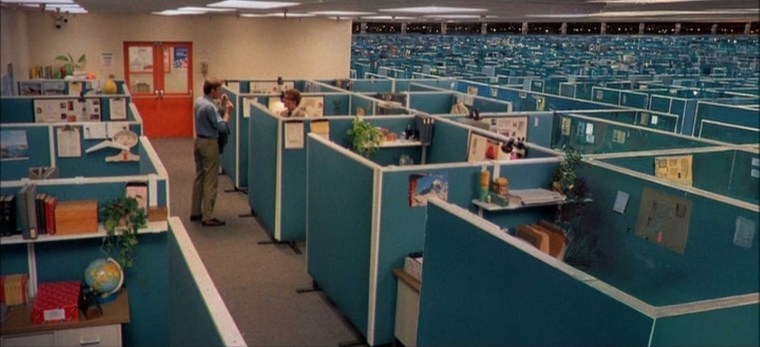
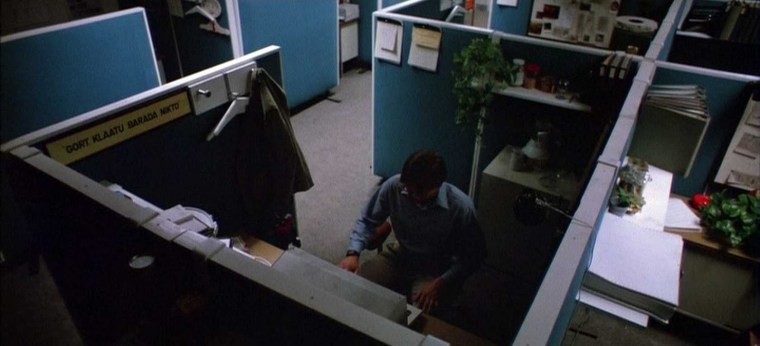
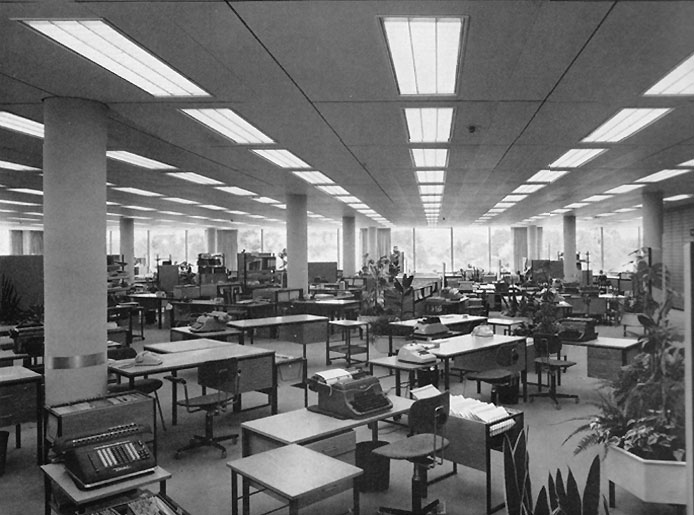
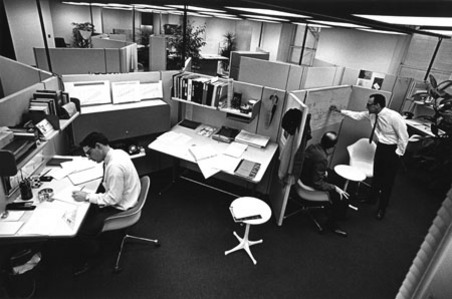
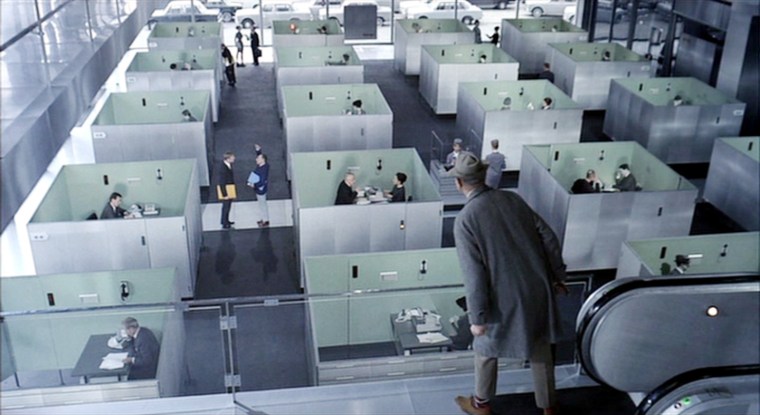
Thanks for some interesting thoughts. I came across your article looking for pictures of “The action office”. A friend recommended the book “A history of work” which I haven’t gotten around to reading yet
Apart from the exaggerated size, the Tron office is exactly how I remember offices in the financial district of Melbourne in the mid-80s. These were the most prestigious enterprise addresses.